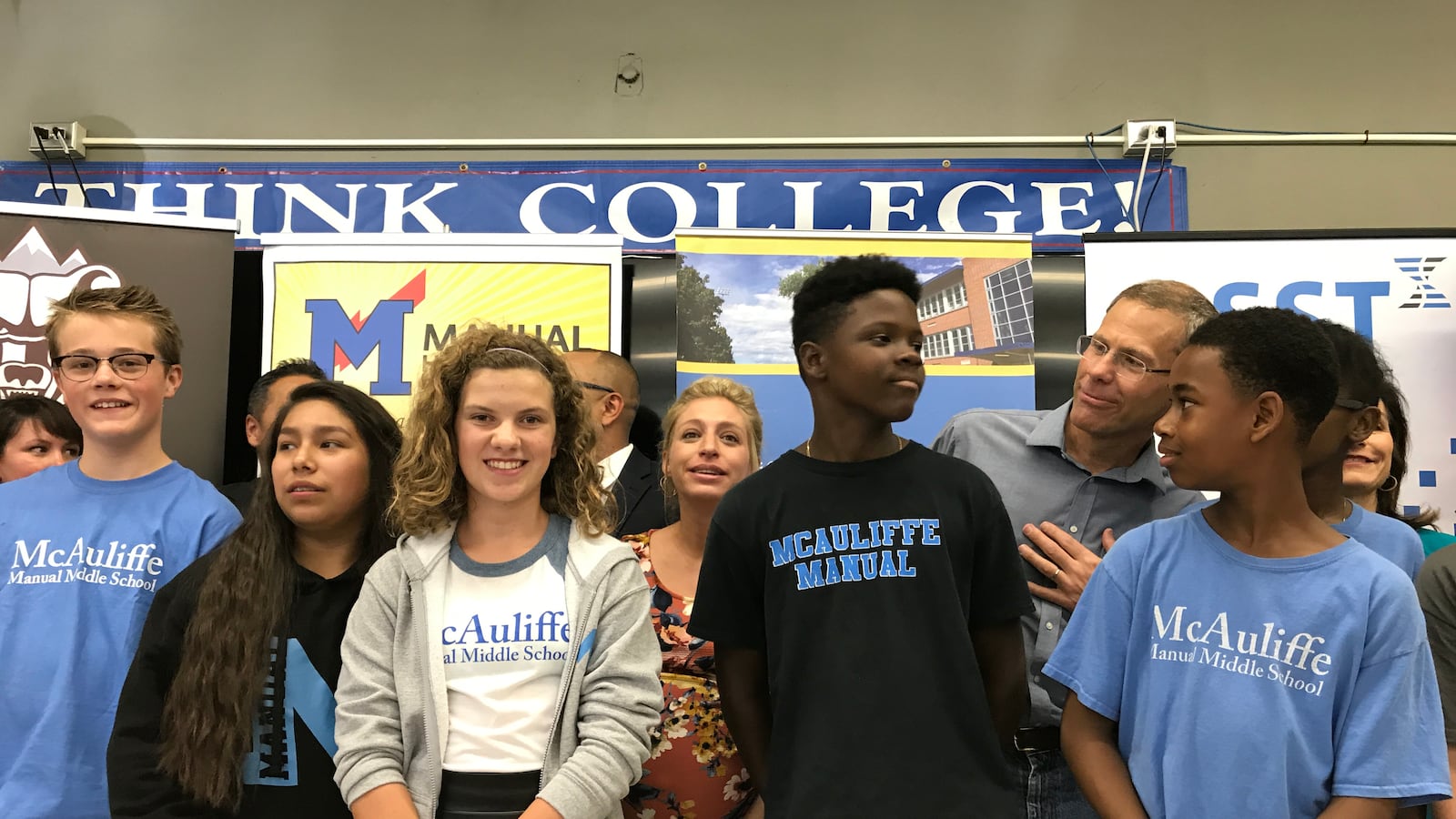Five more Denver schools will have additional freedom this fall from school district rules.
The school board voted unanimously Thursday to allow one school to join an existing “innovation zone” and another four to create a new one. Innovation zones represent a different way of managing schools that is somewhere between the traditional approach and that of charter schools, which are publicly funded but independently run.
Schools in innovation zones are district schools, but are overseen by a separate nonprofit board of directors. The idea is that grouping together schools that share a common goal or focus, and giving them more autonomy over how they spend their time and money, allows them to try new things. The ultimate goal is for the schools to do better by their students.
“I don’t know how these zones are going to end up performing over time,” Denver school board vice president Barbara O’Brien said, “but the need to allow people to try their hardest, to do the best they can and color outside the lines is a really important step.”
The school board approved the first-ever zone in 2016. Called the Luminary Learning Network, it was composed of four district schools: Ashley Elementary School, Cole Arts & Science Academy, Denver Green School, and Creativity Challenge Community.
A fifth school, Escuela Valdez, will now join. Valdez is a dual-language elementary in northwest Denver, where students are taught in English and Spanish. It has high test scores and is rated “blue,” the highest of the district’s color-coded ratings. That fits with the zone’s philosophy of taking already successful schools “from good to great.”
The board also approved the formation of a second zone called the Northeast Denver Innovation Zone. It will consist of four schools in northeast Denver that follow the International Baccalaureate, or IB, curriculum: Swigert International elementary school, McAuliffe International and McAuliffe Manual middle schools, and Northfield High School.
All four of those schools are also high-performing, but the common thread is the rigorous IB curriculum, which has its own tenets and requirements. School leaders hope to create a more seamless experience for students from preschool through 12th grade by better aligning curriculums, teacher trainings, and other practices across the schools.
“The creation of the zone opens a door for collaboration,” Pam Jubis, a parent of two Swigert elementary school students, said during public testimony at Thursday’s board meeting.
Another goal, according to school leaders, is to create a feeder pattern that would ultimately funnel more IB middle school students to Northfield High, which opened in 2015.
Several school board members expressed concerns that the zone could hurt enrollment at other high schools. They were particularly worried about Manual High School, a struggling school that’s also located in northeast Denver and shares its building with McAuliffe Manual Middle School. McAuliffe Manual is modeled after McAuliffe International, the district’s most sought-after middle school. It was placed at Manual in part to feed into the high school.
Kurt Dennis, who serves as principal at McAuliffe International and helped found McAuliffe Manual, told the school board earlier this week that the middle school at Manual is still committed to that arrangement. The feeder pattern is meant to be between McAuliffe International and Northfield, not McAuliffe Manual and Northfield, he said.
“Our intention for McAuliffe Manual is that we are partners with Manual,” Dennis said.
Innovation zones were created by a 2008 state law. Denver Public Schools has taken the concept and run with it. The 92,600-student district is known nationwide for its “portfolio management” approach that incorporates a wide range of school types.
To join an innovation zone in Denver, schools must first be designated “innovation schools.” That status allows them to waive certain state and district rules, such as the length of the school day or year. To get that status, a majority of staff members must vote to adopt an “innovation plan” that details which waivers the school is seeking and why. The same staff voting requirement is in place for joining an innovation zone.
Being part of a zone exempts school leaders from district meetings and trainings, thus allowing them to spend more time working with teachers and students. The leaders are supervised by an executive director hired by the zone’s board of directors, not a district administrator.
In addition, zone schools have more control over how they spend the state per-student funding they receive. They can opt out of paying for certain district services that are non-negotiable for regular district schools, and instead use that money to pay for things that meet their school’s specific needs, such as an additional special education teacher.
Valdez plans to use that budget flexibility to provide additional bilingual speech therapy services, parents and teachers told the school board. The school’s current therapist works part-time and is so overwhelmed with paperwork that it’s cutting into her time with students, they said.
“Though our school is bilingual and our current teacher is very good, the school would benefit from having bilingual support services,” Ivonne Gutierrez, a parent at the school, said.
In exchange for increased autonomy, schools in both zones agreed to work to improve their ratings, which are largely based on test scores, within three years. The Luminary Learning Network is heading into its third school year with three of its four schools on track. Whether or not they meet that goal could influence the board’s future support of the zone.
Eight other schools previously signaled their interest in joining the Luminary Learning Network or forming innovation zones of their own. However, only Valdez and the four schools in the Northeast Denver Innovation Zones submitted applications this year.

